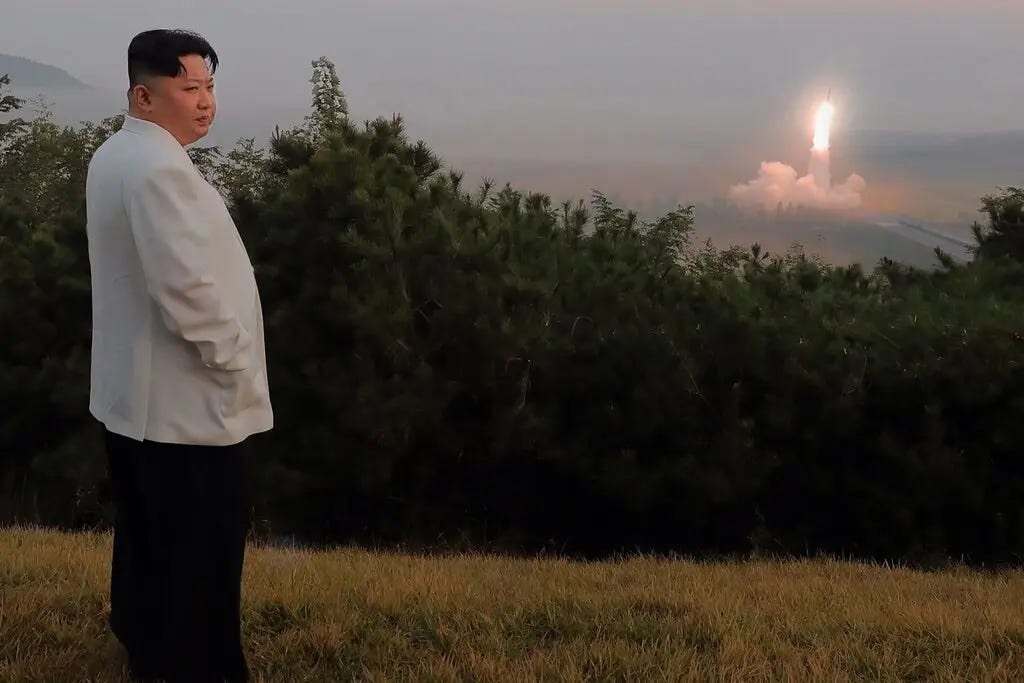North Korea Responds to US War Games with Massive Show of Force
Pyongyang carried out large-scale military exercises as Washington and Seoul conducted record-setting aerial war games, unleashing 23 missiles and over 100 artillery rounds before launching additional munitions on Thursday.
The US and South Korea kicked off their ‘Vigilant Storm 23’ aerial war games this week. The military drills involve a record 240 aircraft, which are expected to fly some 1,600 practice sorties. North Korea denounced the exercises and pledged a significant reaction.
Pyongyang began its response by firing 17 missiles on Wednesday morning – including one which traveled into a maritime buffer zone between the two Koreas for the first time since the peninsula was partitioned in the 1950s. Later in the day, North Korea launched an additional six missiles, making a total of 23, a single-day record for the DPRK. Seoul said the missiles were short-range, and though all landed in the sea, officials noted that air raid sirens sounded on a South Korean island, sending residents fleeing for shelter.
Also on Wednesday, Pyongyang fired over 100 artillery rounds near the maritime buffer zone. South Korea’s Joint Chiefs of Staff said the move was “very unprecedented and we will never tolerate it.”
North Korea followed-up its record-setting day with additional missile launches on Thursday. Tokyo advised some residents to take shelter or remain indoors at about 7:45am local time, as initial reports said one missile passed over Japanese territory. However, officials later confirmed the missile did not cross Japanese territory.
The South Korean military later confirmed reports that one of Thursday’s munitions included an intercontinental ballistic missile (ICBM), saying the weapon traveled a distance of more than 470 miles and reached a top speed of Mach 15. A defense source cited by Yonhap said the missile failed mid-flight, however, claiming it malfunctioned after its second-stage separation. In response, Seoul’s armed forces said it had “beefed up surveillance and vigilance” and would maintain a “readiness posture in close cooperation with the US.”
Pyongyang fired a missile over Japanese territory in October. Before last month’s launch, North Korea had not fired a missile over the country’s airspace since 2017.
Military activity on the Korean Peninsula has spiked in recent months, including a flurry of North Korean weapons tests and joint military drills carried out by Washington and Seoul. US President Joe Biden and his South Korean counterpart Yoon Suk-yeol have stepped up their countries’ military ties, resuming live-fire war games in August after a five-year pause.
The DPRK has responded to those drills with its own increasingly provocative shows of force, as the country has long maintained that American war games are preparation for a full-scale attack. Supreme Leader Kim Jong-un, who recently authorized an updated nuclear policy doctrine, says his missile and nuclear programs exist to prevent US-backed regime change in Pyongyang.
Echoing previous administrations, the Joe Biden White House has demanded that North Korea give up its nuclear weapons, even as it maintains a force of tens of thousands of troops near the DMZ and pledges to keep South Korea under America’s ‘nuclear umbrella,’ vowing to use the bomb in defense of Seoul.




